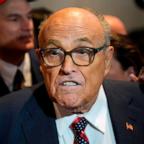Debating the Hack-a-Shaq Issue
— -- Wholesale Hack-a-Shaq reform seems inevitable, but a vocal group of team executives and owners are determined to mount one last campaign against it, emboldened by the early postseason exits of DeAndre Jordan, Dwight Howard, and Andre Drummond.
Hacks on those three players accounted for 262 of the 380 intentional off-ball fouls during the regular season, according to data from ESPN.com Insider Kevin Pelton. With all three on summer vacation, games are flowing again, and opponents of Hack-a-Shaq see a window to convince Silver, league sources say: Why overhaul a set of rules that really only impact three guys?
That contingent includes several players-turned-executives (plus owners Dan Gilbert and Mark Cuban) who believe poor free throw shooters should pay an on-court price for their limitations. Players with other holes in their games get no relief from top-down rules, the thinking goes. Teams have to problem-solve around bad shooters, wispy rebounders, wings who can't dribble, and centers who don't offer a whiff of rim protection. Opponents can target those weaknesses; why shouldn't they be able to target bad free throw shooters, too? This is the big-picture cousin of the "just learn to shoot free throws" argument.
That skill equivalency case has never quite swayed me. Teams can punish all those other flaws within the flow of the game, without resorting to carnivalesque strategies that turn basketball into a three-hour arena walking tour. Sagging off Tony Allen is fundamentally not the same as Jordan running away from another large human trying to hug him. Hack-a-Shaq games are interminable bores. There might not be much evidence viewers flip channels during those anxious bricks, but the NBA is an entertainment company, and many of its D-League-level experiments have been aimed at speeding up the game.
And as Pelton has pointed out, even if those three behemoths account for a disproportionate amount of hacks, the total number of off-ball intentional fouls keeps rising as coaches dabble with other potential victims.
"The game is for fans," said Jeff Van Gundy, a prominent Hack-a-Shaq opponent. "And for fans, it sucks."
There is also some naked self-interest in the way teams view Hack-a-Shaq. Teams with blaring hack targets prefer reform. Teams stocked with good free shooters like the hack arrow in their quiver, especially if they might encounter Jordan, Howard, or Drummond in the playoffs.
It's also not entirely true that the NBA has never used rule changes to help certain subsets of players, or nudge the game into a more appealing direction. The hand-check ban, for instance, helped elite ball-handlers, and unshackled the NBA's drive-and-kick game. Still, the anti-reform group is strong. They know some change is coming, and they are searching for compromise solutions that might chip away at Hack-a-Shaq without removing it as a strategic weapon. Almost every popular proposal would eradicate Hack-a-Shaq -- which is the idea, obviously. That includes the cleanest path: extending the harsh penalties from last two minutes of regulation throughout the entire game. David Stern openly campaigned for this during his final years as commissioner, and most of Adam Silver's comments over the last year point in this direction.
Other popular ideas would have the same effect. Allow a victimized team to pick its own foul shooter, and, poof, the hacks disappear; no team is slap-fighting with Jordan if the Clippers can send J.J. Redick to the line. Ditto for another common suggestion: giving the hacked team a choice between sending an awful foul shooter to the line, or taking the ball out of bounds again.
That's why the anti-reform group has taken an interest in an off-the-wall proposal that originated with Rick Sund, a special advisor to the Hawks front office, and made its way into competition committee meetings, per several league sources. Sund's basic idea: any intentional off-ball hack committed in the backcourt, at any time during the game, draws the same untenable penalty currently in place for such hacks in the last two minutes of regulation. Translation: When the Clippers grab a rebound and transition from defense to offense, you can't smack Jordan until he crosses half court. Sund and others have pitched a modified version of this idea that would extend the protected zone all the way to the 3-point arc as the Clippers (in this example) play offense.
The proposal sounds goofy, but it has gained some traction among influential voices within the league, sources say. They see it as a way for Jordan and Drummond types to remain in the game -- to play defense, grab rebounds, and get far enough up the court where they might set a screen or two before entering a red zone in which opponents would be free to hack at them.
A few team officials have suggested pairing this kind of tweak with a super bonus, sources say. Perhaps a Hack-a-Shaq victim might get three shots to make two free throws after any hack, or once his team has entered the bonus. Commit a certain number of overall team fouls -- say, eight in a quarter -- and then any player on the hacked team, including ball handlers fouled in the normal course of action, gets the same 3-to-make-2 privilege. Fouling Drummond on purpose gets less appealing if fouling Marcus Morris by accident two minutes later gives Morris, a 70 percent foul shooter, an extra chance for a two-point trip.
Hell, Van Gundy would even go to a 4-to-make-2 system at some point, he said.
The pitfalls in all these ideas are obvious, and other unintended consequences would emerge. The Sund proposal would spawn an ugly game of tag around some arbitrary boundary, whether it's the midcourt line or the 3-point arc. Referees and the folks in Secaucus would have to review whether close-call hacks occurred inside or outside those lines. Depending on the specifics of the rule, they might also have to review whether an off-ball foul inside the permissive zone was intentional. Reviews are tedious, and often have the embarrassing result of revealing some other violation that is not subject to review.
And if you want all intentional off-ball fouls banned, the Sund proposal obviously wouldn't accomplish that -- by design.
"I just don't know why we even need off-ball fouling in the game," Van Gundy said. "There are plenty of times you can foul a guy when he has the ball."
The old 3-for-2 rule might work as a deterrent, but in some cases, it would add more throws -- hardly a solution to the problem of too many free throws. It would also make it harder for teams over a certain foul limit to hack their way to late-game comebacks, since enemy shooters would get an extra free throw, if necessary. The NBA likes comebacks, even if they take forever.
Having Jordan stand at midcourt while the Clippers play offense 4-on-5 would have the same theater-of-the-absurd vibe as watching him scurry away from pursuers reaching to whack him. That might be entertaining, but if the goal is to construct non-basketball scenarios that titillate, you might as well keep the status quo. Some fans find it riveting to watch Jordan, Drummond, and Howard sweat through a grade-school task with games in the balance; Cuban has agitated for keeping the current rule set-up precisely for this reason.
The chess game around Hack-a-Shaq is also interesting, even if coaches misplay it sometimes. I grin when a smart coach busts it out at the end of a quarter to gain an extra possession. Teams who get hacked amp up their pursuit of free throw offensive rebounds, bending the math in their favor as much as they can. Hacking teams can snatch the math back by using all-offense lineups they'd never have the guts to trot out if they were playing actual NBA defense.
On the flip side, those offense-only units play against set defenses after intentional fouls; hacking teams forfeit fast breaks and defensive rebounds in the run of play that create chaos. The push-and-pull of all this stuff is kind of fun.
A lot of smart people, including the noted NBA gambler Haralabob Voulgaris, have warned that effectively banning off-ball Hack-a-Shaq would subject the Jordan/Drummond/Howard types to more severe violence when they have the ball, or even when they're just near it -- chasing rebounds, or setting picks.
The Sund proposal might prove unworkable and silly in practice; it might engineer more ridiculous than currnet rules. Silver probably would lobby hard against it. But its existence, and the burbling interest in it, shows the Hack-a-Shaq fight isn't over.




